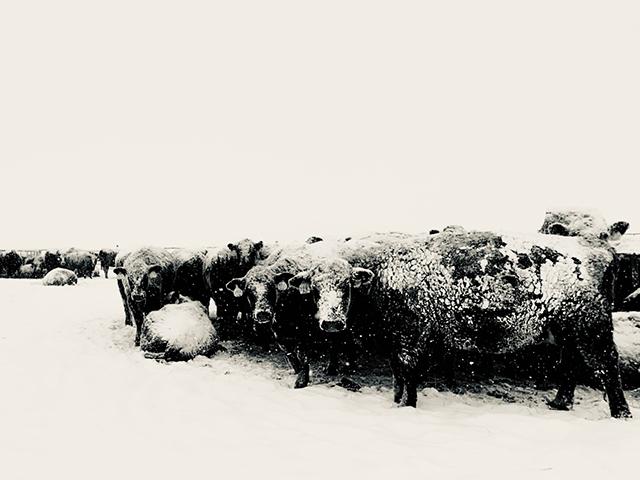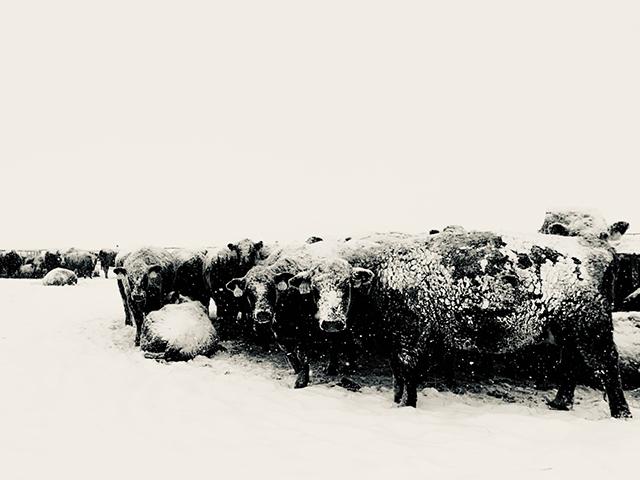Ag Weather Forum
Monster Storm Coming For Central US With Potential Heavy Rain, Snow
We saw one large storm around the Christmas holiday and forecast for Jan. 8-10 is another monster storm system with widespread impacts. Unlike that previous storm, which was the conglomeration of three different pieces of energy, this storm is one large and strong piece of energy that is currently diving southeast from Alaska.
That makes the forecast tracking and timing a bit more certain, but there are still differences with regards to impacts. Staying in tune with your local forecast from DTN could help you find the trends for your area.
The piece of energy responsible will develop in the Western United States this weekend, which will then slide eastward into the Plains before arcing back up into the Northeast by the middle of the week. At least during its time in the West and Central U.S., it will be a very potent ball of energy, producing a low-pressure center in the Texas Panhandle early Jan. 8. That low center will shift eastward into Missouri on Tuesday, Jan. 9, then northeast toward Toronto for Jan. 10. Models have actually had a very consistent track with this storm in this general path, a sign of consistency and confidence in how this storm will track. Timing with this storm has also been consistent during those days. What has not been consistent is the overall impact from the storm.
Widespread precipitation is expected from Texas up to Nebraska and all points east, but there is still uncertainty on where the frozen precipitation will occur and how much will accumulate.
Generally, with these types of systems, the favored location is on the north side of the storm track by about 100 to 150 miles. That would bring Colorado, Kansas, and Nebraska northeast into Wisconsin and Michigan as the primary areas to be involved with heavy snowfall potential of more than 6 inches.
P[L1] D[0x0] M[300x250] OOP[F] ADUNIT[] T[]
In fact, this storm system is packing a punch big enough to talk about a stripe of up to 12 inches of snow in some limited locations where banding sits idle. The most consistent areas models have been calling for heavy snow in are from southeastern Colorado through western Iowa.
Farther east, the dynamics of the storm system become more uncertain. Warm air out ahead of the storm in the Midwest will lead to close calls of the changeover from rain to snow. Multiple precipitation types during the event will be possible.
In fact, areas like northern Indiana could see several changes with a start of rain Monday night which could mix with or change over to snow during the overnight hours, go back to rain for Tuesday, then end as snow behind the system on Wednesday. The sort of back-and-forth potential over the eastern Midwest could lead to some very interesting and blotchy snow totals. There is potential for a busted forecast for large areas of the eastern Midwest and those could go either way -- getting much more snow than forecast or getting much less. Still, areas of the eastern Midwest, from Missouri through Michigan and the adjacent areas in Wisconsin, Indiana, and Ohio could see some significant totals on the ground after the storm leaves Jan. 10.
To go along with the snow potential, models are also trying to determine how strong winds may be. Models so far are being much more subdued than we typically would see out of such a strong storm system. Model forecasts have gusts in the 35 to 45 mph range on the backside of the system from the Plains through the Midwest. Under a more dynamic system where a significant burst of cold air comes in behind it, winds typically trend in the 50 to 60 mph range in the Plains and 40 to 50 mph range in the Midwest. Without that intense drop in temperatures, winds may not make for huge drifts of snow. However, it may be strong enough to produce whiteout conditions for a time and a blizzard where snow is falling the hardest.
Back to the more certain aspects of the storm. Heavy rain and thunderstorms are forecast for large areas of the Central and Eastern U.S. Stripes of 1 to 2 inches of rain are expected in a band along the storm track from Missouri through southern Ontario, over some growing drought areas in the Midwest that feed into the Ohio and Mississippi Rivers. More intense rains of 1.5 to 3 inches are forecast for the Gulf and East Coasts. Between the two, in the Lower Mississippi and Tennessee valleys, where drought is currently the deepest in the country, amounts are much more scattered and light, but pockets of some heavy rain could occur in thunderstorms.
And those thunderstorms may be strong or severe. Deep pulls of moisture from the Gulf of Mexico ahead of this system are a classic way a storm of this type produces severe weather for the Gulf Coast states. The Storm Prediction Center, a division of NOAA, has had areas along the Gulf Coast marked with risks for severe thunderstorms all week long in anticipation of stronger storms near the coast. The Center may expand those risks northward depending on how deep the low-pressure center falls and how strong the cold front that races through actually becomes.
There may be some lingering uncertainty with this storm, but it will be a large one with many impacts across a wide area of the U.S. This storm will preclude a visit from the polar vortex later next week. Deep, arctic air will flow into Western Canada and then the western half of the U.S. starting Jan. 11. A later blog post will discuss that potential and impact.
**
To find more weather conditions and your local forecast from DTN, head over to https://www.dtnpf.com/…
John Baranick can be reached at john.baranick@dtn.com.
(c) Copyright 2024 DTN, LLC. All rights reserved.






Comments
To comment, please Log In or Join our Community .